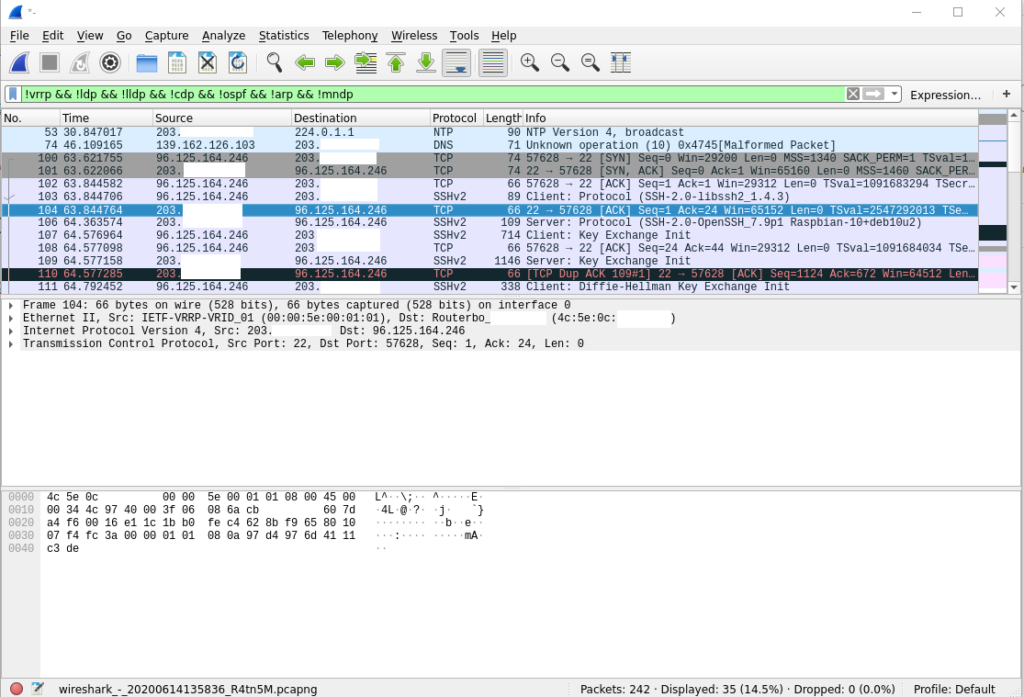

- #Installing snorby running a wireshark pcap through snort install#
- #Installing snorby running a wireshark pcap through snort code#
#Installing snorby running a wireshark pcap through snort install#
Set up a Source directory in your home directory and then install some of the required packages that you’ll need:
#Installing snorby running a wireshark pcap through snort code#
In future blogs in this series we will delve more into the customization of Snort as well as Python code which was used for the visualization above and even more.Set up a Source directory in your home directory and then install some of the required packages that you’ll need: # mkdir ~/Source # sudo chown

Visualizations such as these are highly important in many jobs where managers may not be as technically fluent. The current status is very basic but allows great insight into the traffic that is appearing on a Network and the severity of Alerts with several other metrics. This was achieved using the Bokeh Library. The Graphic below shows a Python Server with two plots, one for alerts vs. With this in mind I have set about using Python, a programming language highly popular in data science and visualization, to attempt building a visualization system for Snort. Data visualization has become more and more important in recent history due to more systems having “Big Data” and intrusion detection systems are no different due to the large amount of packet data that is recorded and categorized. Snorby is a popular open source ruby on rails application often used for viewing snort events a more friendly manner for investigation which can be found here.Īs per the series name, my current project has been on developing a real-time system which also allows for in-depth analysis and trend detection of Snort alerts. pcap files that can be used when testing Snort Now that Snort, Barnyard2 and Pulledpork are all working together successfully and Alerts are being logged into a MySQL database for storage, The captured data is ready for analysis. We can also use PulledPork to manage my Snort rules if we need just a default setup for Snort’s traffic analysis. The MySQL database schema for Barnyard2 is shown below.īarnyard2 was run as a daemon the same as Snort with the following configuration. To log the alerts Snort Generates, a popular add-on to Snort, Barnyard2 was used to store the alerts in a MySQL database.The MySQL database created by Barnyard2 is definitely not simple however, but is one of the most stable methods for collecting Snort alerts efficiently without error. For the demonstration, Snort was installed on a Ubuntu Server 16.04 along with PulledPork for automatically updating rule sets and Barnyard2 for storage of Alerts. The following was achieved using the tutorial at the top of the blog ‘Install Snort on Ubuntu 16.04’. Of course in some architectures this is not possible but Snort has the ability to connect multiple sensors together in a cluster architecture for more complex systems. When deploying a IDS server it is best to deploy it somewhere in the architecture that most of the incoming traffic will go through possibly behind a router. Each of these modes has its own uses but the intrusion detection mode is the core of Snort which we will cover today. Snort has several mode’s of running, sniffer mode (basically a CLI Wireshark), packet logger mode (to store the packets for later analysis), pcap reader (to process captured packets through the detection engine) and network intrusion detection system mode. Snort is a rule and signature based intrusion detection system meaning that is highly customizable depending on the specific network scenario and architecture. Intrusion prevention systems are similar but as the name suggests can block traffic based on certain variables rather than just generate alerts for analysis, however, IPS are often prone to a high false positive rate which can negatively affect transfer rate and often block necessary traffic entirely. The key idea behind intrusion detection systems is to be able to look at incoming traffic on its way to a network and allow system administrators to have an “early warning system” for potentially dangerous or malicious packets. If you would like to find a guide to install Snort, here are some useful links:

I will provide links throughout for more information on in-depth areas. As this is just a short blog, it would be impossible to cover every aspect of a complex system such as Snort, so I will only cover the basics and how I use them on a daily basis. This blog will discuss the basic internal workings of the popular Intrusion Detection System, Snort.


 0 kommentar(er)
0 kommentar(er)
